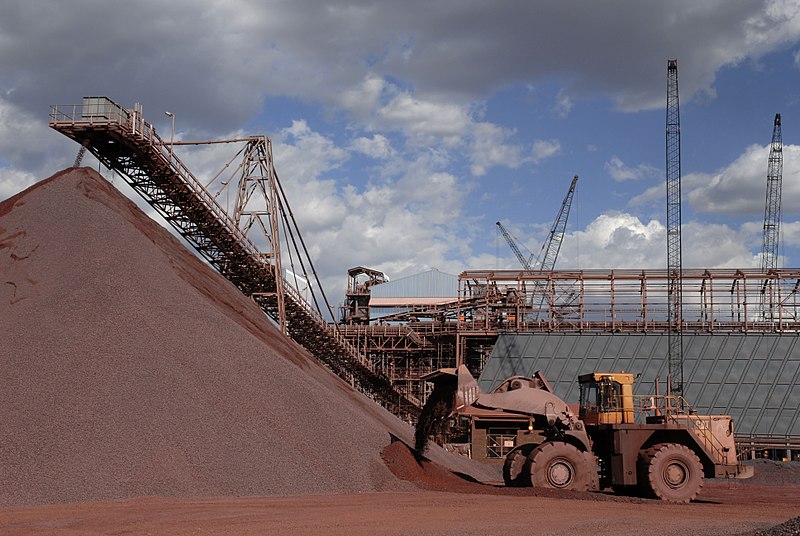Iron ore tailings IOTs
|
A loader works with the iron ore tailings from the Sishen mine expansion project. (Photo attribution: Graeme Williams, Media Club South Africa.) |
Iron ore tailings (IOTs) are a form of solid waste produced during the mining process. IOTs are created through the extraction of the valuable portion of the iron ore from the waste portion. This waste material is sometimes produced in the form of a type of slurry.
IOTs have no commercial value and are typically stored in tailings dams that also contain water and other waste that is produced as a result of the mining process.
IOTs stored in tailing dams may be dangerous due to high levels of chemicals (such as iron oxide) that are thought to be harmful to the environment. IOTs that are not controlled or contained are sometimes carried by wind and water to contaminate other areas.
High volumes of IOTs may create environmental, economic and ecological concerns due to the amount of land occupied and the safety hazards they can produce.
Researchers have been exploring different recycling methods to convert IOTs into useful products that are not environmentally harmful. Some of these products include:
- Bricks.
- Ceramic tiles.
- Concrete aggregates.
- Epoxy and engineered cementitious composites.
- Polypropylene cement.
[edit] Related articles on Designing Buildings Wiki
Featured articles and news
RTPI leader to become new CIOB Chief Executive Officer
Dr Victoria Hills MRTPI, FICE to take over after Caroline Gumble’s departure.
Social and affordable housing, a long term plan for delivery
The “Delivering a Decade of Renewal for Social and Affordable Housing” strategy sets out future path.
A change to adoptive architecture
Effects of global weather warming on architectural detailing, material choice and human interaction.
The proposed publicly owned and backed subsidiary of Homes England, to facilitate new homes.
How big is the problem and what can we do to mitigate the effects?
Overheating guidance and tools for building designers
A number of cool guides to help with the heat.
The UK's Modern Industrial Strategy: A 10 year plan
Previous consultation criticism, current key elements and general support with some persisting reservations.
Building Safety Regulator reforms
New roles, new staff and a new fast track service pave the way for a single construction regulator.
Architectural Technologist CPDs and Communications
CIAT CPD… and how you can do it!
Cooling centres and cool spaces
Managing extreme heat in cities by directing the public to places for heat stress relief and water sources.
Winter gardens: A brief history and warm variations
Extending the season with glass in different forms and terms.
Restoring Great Yarmouth's Winter Gardens
Transforming one of the least sustainable constructions imaginable.
Construction Skills Mission Board launch sector drive
Newly formed government and industry collaboration set strategy for recruiting an additional 100,000 construction workers a year.
New Architects Code comes into effect in September 2025
ARB Architects Code of Conduct and Practice available with ongoing consultation regarding guidance.
Welsh Skills Body (Medr) launches ambitious plan
The new skills body brings together funding and regulation of tertiary education and research for the devolved nation.
Paul Gandy FCIOB announced as next CIOB President
Former Tilbury Douglas CEO takes helm.
UK Infrastructure: A 10 Year Strategy. In brief with reactions
With the National Infrastructure and Service Transformation Authority (NISTA).























